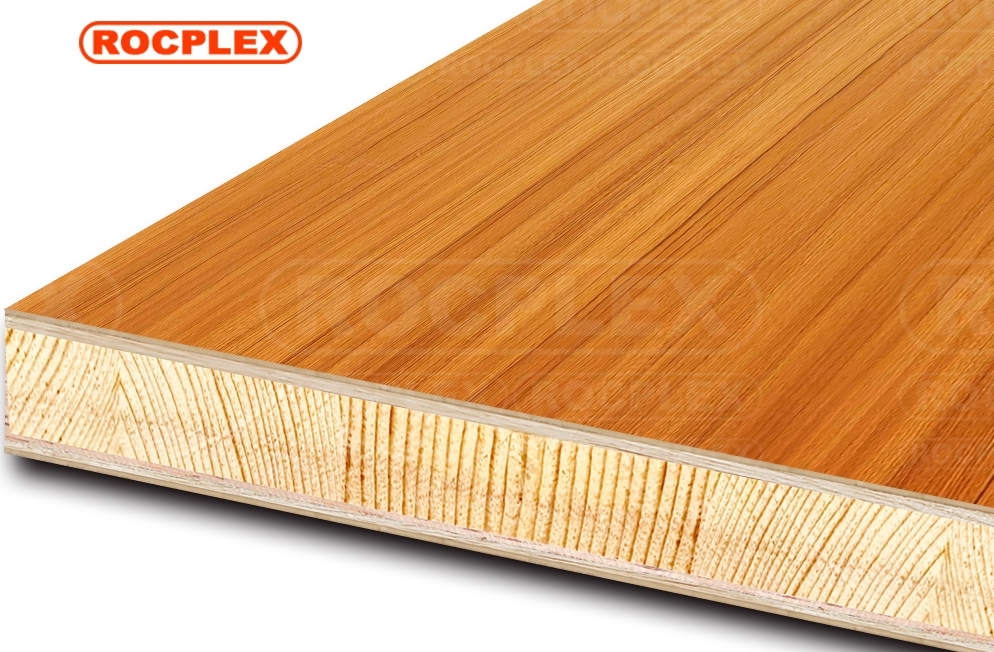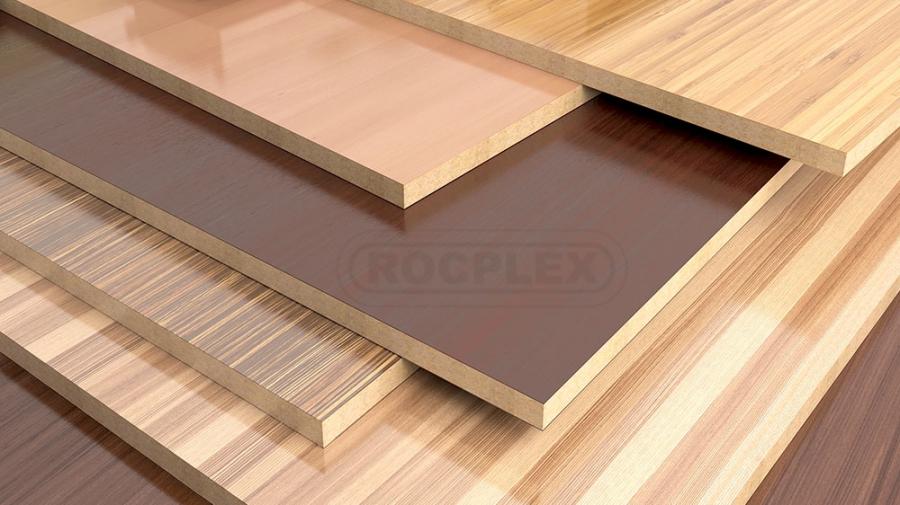When it comes to choosing the right material for various applications, it’s crucial to weigh the pros and cons of each option. Melamine boards, produced by companies like Xuzhou ROC International Trading Co., Ltd. (ROC), have gained popularity in recent years due to their numerous advantages. In this blog post, we will explore the world of melamine boards and compare them to other common materials such as plywood, particleboard, and solid wood. By the end, you’ll understand why wholesale melamine boards often reign supreme in various industries.
Understanding Melamine Boards
A. What are Melamine Boards?
Melamine boards are engineered wood products made from particleboard or MDF (Medium-Density Fiberboard) panels covered with a layer of melamine resin-infused paper. During manufacturing, the resin is cured, creating a hard, durable surface that is resistant to scratches, stains, and moisture. This process results in a board that combines the affordability of engineered wood with the attractive finish of melamine.
B. Key Characteristics
Melamine boards boast several key characteristics that make them a popular choice. Firstly, they are exceptionally durable, making them suitable for high-traffic areas. Secondly, melamine boards come in a wide range of finish options, from wood grain patterns to solid colors, allowing for versatile design choices. Lastly, affordability is a significant advantage, as melamine boards are typically more cost-effective than some other materials.

C. Common Applications
Melamine boards find use in various applications, including kitchen and bathroom cabinetry, shelving, countertops, furniture, wall paneling, and more. Their versatility and aesthetic appeal have made them a preferred choice in both residential and commercial settings.
Comparison with Plywood
A. Advantages of Melamine Boards Over Plywood
Resistance to Moisture and Warping: Melamine boards outperform plywood when it comes to moisture resistance. The melamine resin surface provides a barrier against water damage, making them ideal for kitchens and bathrooms. Plywood, on the other hand, can warp and deteriorate when exposed to moisture.
Smooth and Consistent Finish: Melamine boards offer a smooth, consistent finish that is ready for use without the need for additional finishing or painting. Plywood may require more preparation and finishing work to achieve a polished look.
B. Disadvantages or Limitations
While melamine boards have their advantages, they do have some limitations when compared to plywood. Plywood is generally considered stronger and can support heavier loads, making it a better choice for certain structural applications. Additionally, plywood is known for its natural wood grain appearance, which some prefer over melamine’s printed finish.
Comparison with Particleboard
A. Strength and Durability
Melamine boards are often superior to particleboard in terms of strength and durability. The melamine surface not only provides protection against wear and tear but also enhances the overall strength of the board. Particleboard, while more budget-friendly, may not hold up as well in demanding environments.
B. Polished Appearance
Melamine boards excel in providing a polished appearance due to their smooth and consistent surface. Particleboard can have a rougher texture, and while it can be covered with melamine too, it may not achieve the same level of refinement.
C. Cost Differences
There can be cost differences between it and particleboard, with particleboard typically being the more economical choice. However, considering the superior finish and durability of melamine boards, the slightly higher cost is often justified, especially in projects where aesthetics and longevity are important.
Comparison with Solid Wood
A. Cost-Effectiveness
One of the most significant advantages of melamine boards over solid wood is cost-effectiveness. Solid wood can be considerably more expensive due to the cost of harvesting and processing natural timber. Melamine boards provide an affordable alternative while still delivering an attractive appearance.
B. Maintenance and Cleaning
Maintaining and cleaning it is a breeze. Their smooth surface is easy to wipe clean, making them a practical choice for areas prone to spills and stains. In contrast, solid wood requires more delicate care to prevent damage from moisture and spills.
C. Environmental Advantages
Using melamine boards also has environmental advantages over solid wood. These boards are typically made from sustainable wood sources, and the manufacturing process minimizes waste. Choosing melamine over solid wood can contribute to responsible and eco-friendly construction practices.

Cost Savings with Wholesale Melamine Boards
A. Breakdown of the Cost Advantages
When it comes to project budgets, every penny counts. This is where the cost advantages of buying wholesale melamine boards truly shine. Wholesale purchases inherently come with lower per-unit costs, making them an economically savvy choice for businesses and individuals alike. Let’s delve into the specifics of how wholesale it can translate into significant cost savings.
Firstly, ordering melamine boards in bulk from manufacturers like Xuzhou ROC International Trading Co., Ltd. (ROC) often results in substantial price reductions per board. This is due to economies of scale – the more you buy, the lower the cost per unit. For large-scale projects, such as commercial construction or interior design ventures, this can equate to considerable savings.
Moreover, buying wholesale it minimizes transportation costs. Fewer shipments are required, which reduces shipping fees and associated expenses. Companies can also benefit from lower warehousing costs as they can store larger quantities of melamine boards, saving on storage space and logistics.
B. Comparing Overall Project Costs
To understand the real impact of wholesale melamine boards on project costs, it’s essential to compare them to alternative materials. Let’s take a hypothetical scenario involving the renovation of a restaurant’s interior. In this scenario, you can choose between melamine boards, solid wood, and plywood for various elements like cabinetry, wall paneling, and tabletops.
Cabinetry: Melamine boards, with their durable and customizable finish, are a cost-effective choice for cabinetry. While solid wood may provide a more upscale appearance, the material cost alone can be significantly higher. Plywood sits somewhere in the middle in terms of cost but may require additional finishing work.
Wall Paneling: For wall paneling, melamine boards offer a sleek and easy-to-maintain option at a fraction of the cost of solid wood paneling. Plywood might be more affordable than solid wood but could lack the polished finish that melamine provides.
Tabletops: In a restaurant setting, tabletops endure constant wear and tear. Melamine boards, with their resistance to stains and scratches, are a practical choice. They are also less expensive than solid wood tabletops, which can be vulnerable to damage and require more maintenance.
Conclusion
In conclusion, wholesale melamine boards offer a compelling combination of affordability, durability, and aesthetic appeal that often make them the preferred choice for various applications. While they may not be suitable for every situation, the advantages of it, especially when compared to plywood, particleboard, and solid wood, make them a versatile and practical material for many projects. Whether you’re designing a new kitchen, furnishing an office, or working on a renovation, considering melamine boards from manufacturers like Xuzhou ROC International Trading Co., Ltd. (ROC) can be a smart choice that will help your project shine.
Post time: 11 月-17-2023

